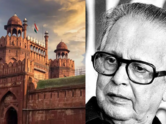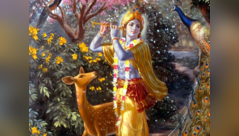01/6Lesser-known rotis of India

Roti is a staple food of Indian cuisine, and has a rich history dating back thousands of years. Its origins can be traced to the Indus Valley Civilisation, where people ground grains like wheat and barley into flour and cooked them on hot stones or clay griddles. It is said that the word roti came from Sanskrit word “Rotika”, which means ‘bread’. Over time, as agriculture flourished, the art of making roti evolved, with various regions developing their own unique styles and techniques. Today, roti remains a symbol of sustenance and tradition in Indian households, embodying centuries of culinary heritage and cultural significance as a simple yet essential part of daily life. From the soft and fluffy naan of North India to the crispy and layered paratha of Punjab, each region boasts its own unique style of roti, offering a delightful experience for the palate. However, there are lots of roti varieties that are still unknown and unheard of! Here is a list of some amazing rotis that you must know about… (Images courtesy: Canva)
02/6Lambi Matka Roti - Nagpur


Lambi Matka Roti is a traditional flatbread originating from Nagpur, Maharashtra. It is named for its elongated shape resembling a ‘matka’ or earthen pot. Made from whole wheat flour, this roti is rolled out thinly and cooked on a griddle until golden brown. Its distinctive shape allows for easy tearing and dipping into curries or chutneys. Lambi Matka Roti is cherished not only for its unique appearance but also for its soft texture and versatility, making it a beloved part of Nagpuri cuisine and a symbol of the region's culinary heritage.
03/6Janta Roti - Orissa


This roti is prepared by cooking the wheat flour in a mixture of milk and sugar water with a little ghee. And then the roti is made on a pan, which is super-soft in texture. Its simplicity allows it to complement a wide range of dishes, from hearty curries to simple lentil soups. Janta Roti's widespread popularity stems from its affordability, versatility, and comforting texture. It serves as a testament to the resilience and resourcefulness of Odia cuisine, embodying the spirit of community and tradition in every bite.
04/6Lesu - Uttarakhand


Lesu is a traditional flatbread from Uttarakhand and a cherished part of the region's culinary heritage. Made by stuffing a form of ragi called Mandua in a whole wheat chapati, this bread is rolled out thinly and cooked on a griddle until golden and crisp. Its earthy flavour and hearty texture make it a perfect accompaniment to local dishes like Bhaang ki Chutney or Saag. Lesu's popularity extends beyond Uttarakhand, with its nutritious profile and rustic charm earning it admirers across the country. As a symbol of tradition and sustenance, Lesu embodies the spirit of Uttarakhand's mountainous landscape and rich cultural heritage in every bite.
05/6Dibba Roti- Andhra Pradesh


Dibba Roti is a unique type of bread that holds cultural significance in Telugu cuisine. It’s prepared by cooking a batter of rice flour, urad dal, and spices, it is poured into a shallow, flat-bottomed pan and steamed until firm. The result is a thick, spongy bread with a slightly crispy exterior. Dibba Roti is often enjoyed with spicy chutneys or vegetable curries, showcasing its versatility and ability to complement a wide range of flavors. Its distinctive texture and comforting taste make it a cherished part of Andhra cuisine, celebrated for its simplicity and deliciousness.
06/6Girda Roti - Kashmir


Girda Roti holds a special place in the local culinary landscape. Made from whole wheat flour, water, and a pinch of salt, it is shaped into small, round balls and baked in a tandoor until golden brown. The resulting bread is dense yet fluffy, with a slightly crispy exterior. Girda Roti pairs perfectly with Kashmiri dishes like Rogan Josh or Dum Aloo, adding a hearty and comforting element to the meal. Its rustic charm and delicious taste make it a beloved staple in Kashmiri cuisine, embodying the region's rich culinary heritage.


































































closecomments
SIGN IN WITH
GoogleEmail